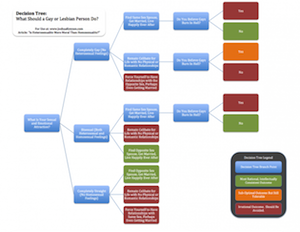Today’s mail bag focuses on strategy, decision trees, and reverse engineering problems.
Dear Mr.Kennon,
I’ve been reading your blog for quite some time and i find it very useful in terms of business and finance knowledge.
I’m looking to start a business.I’ve read one of your mail bag responses, the one about taking a small business parter for a startup. My question is, how do you structure your thoughts to come up with that answer? Especially the part where you describe how you would start a wedding planning business.
Did you read any specific books? I’ve started to read the intelligent investor to increase my investing knowledge, but i’m curious as to what books or articles would you recommend so that i can increase my knowledge in business and especially in the field of entrepreneurship?
Sincerely,
Anonymous
No, it’s just whatever I think of as I sit down to respond. To come up with my answers for these sorts of real-world problems, both on this site and in my own businesses and life, I use two primary tools:
- Reverse Engineering: I look at the end product and then work my way backwards, breaking the whole down into specific, small components that can be studied and understood
- Decision Trees: I diagram decision trees
Then, after I am done with all of that, I compare whatever I find to my own, personal opportunity costs to make a decision about what I’m willing to give up, and what I’m willing to pay, for a particular outcome relative to the probability of it happening. I’ll give you a couple of examples.
Reverse Engineering a Business Problem
Let’s imagine I am a small business merchant and I want to earn $100,000 per year by selling a product with operating margins of 25%. Working backwards, we can take $100,000 in operating profit / 0.25 = $400,000. Now, I know I need to sell $400,000 worth of the product to reach my income goal. Then, I’d work backwards even further. The average person works roughly 2,000 hours per year. That means I need to sell an average of $200 per hour, every hour of the year in order to hit my income goal. If I do that, I’ll hit $100,000.
[mainbodyad]Alternatively, I may continue to work backward even further. What if, instead of me selling $200 per hour, I could somehow arrange a workforce of 20 people? If I can get a $10 profit spread, per hour, on each of them, I would also hit my $100,000 operating income goal. Obviously, I may not want to take on any new risk by having a fixed payroll, so some sort of commission schedule would need to be established. That would inform my business model.
In the case of the article you referenced, I began by asking myself, “What could go wrong in a business partner relationship?” Then, I reversed it. It’s easier to spot problems this way.
Decision Trees
These are one of my favorite tools. I don’t want to take the time it would require to make a new one, and I’m not going to post any of the ones related to the business, so I’ll just link to the last one that was published on the site. (Click here to see the big image, which was originally published to explain this mail bag question.)
 Basically, a decision tree begins at a specific point in time and then branches to show different decisions that you could make. These branch points beget other branch points, ad infinitum, until you have what looks like a tree with roots. (I, actually, prefer to diagram horizontally, but that is just a personal preference.)
Basically, a decision tree begins at a specific point in time and then branches to show different decisions that you could make. These branch points beget other branch points, ad infinitum, until you have what looks like a tree with roots. (I, actually, prefer to diagram horizontally, but that is just a personal preference.)
The discipline of using decision trees is very comparable to the logic flow charts that were used in early computer programming languages. They can help you spot errors and, even more dangerous, implicit assumptions. You need to always check your assumptions.
That really explains a majority of my process. Break down components into individual parts that can be studied, start at the end and work your way backwards asking what can go wrong or what could cause failure (then invert to find success), then build decision trees to visually diagram your break points, to borrow a term from engineering. Factor in your personal opportunity cost and personality profile and most decisions make themselves if you are adequately prepared at the moment of opportunity. It’s worked well for me.


